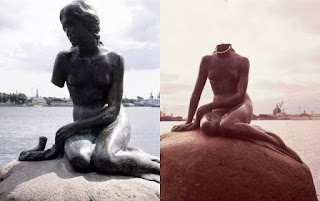ARTS AND THEFTS HITS STORES TOMORROW!
I'm just a little excited. Just a little.
But I have a right to be! My book is coming out! The book launch will be March 2, 7 pm, at The King's English bookstore. It's a great venue; I love that charming bookstore. See you there!
Okay, so last year when Under Locker and Key hit stores, I built up to it with interviews with my characters. I wanted to do something a little different with this new book.
So, Arts and Thefts takes place over the summer at Scottsville's community art contest. Jeremy and Becca have to team up once more to stop an art saboteur from ruining kids' chances of winning the contest. It's personal for Jeremy because his forger friend Case is one of the contestants.
Since the book is about art sabotage, and Case is a forger, I thought it might be fun to give you all a little exhibition of some famous art forgers/forgery and vandalism. Because crime is fun. Or, at least, reading about it is.
FORGERY:
Elmyr de Hory:
I think I've mentioned this guy before. He's a famous art forger, mostly for being the subject of Orson Welles's (fake, believe it or not) documentary called F for Fake. He has over 1,000 pieces of fake art to his name, starting with a fake Picasso.
Wolfgang Beltracci:
Another ridiculously prolific forger. He and his wife forged and sold tons of fake art, including forgeries of Max Ernst and Heinrich Campendonk. He has made more than $100M from selling forgeries. He was caught and sentenced to 6 years in prison, but only served 3 before being released.
Han van Meegeren's Jesus Among the Doctors:
This piece is cool. Van Meegeren had to paint it in front of court-appointed witnesses to prove that he was a forger. He was accused of collaborating with Nazis and "plunder[ing] Dutch cultural property" because he sold a Vermeer painting to Reichsmarschall Hermann Goring. Guess what? It was fake, so he wasn't a traitor. Just a forger. In 1947, a Dutch poll found him the second-most popular man in the country, just behind the Prime Minister.
Michelangelo's Sleeping Eros:
Yes, Michelangelo was also a forger. The picture above is actually a real statue similar to one that 21-year-old Michelangelo made out of marble. By the time anyone realized it was fake, Michelangelo had become famous for his Pieta. The forgery was likely destroyed in a fire in 1698.
VANDALISM:
The Mona Lisa:
Mona Lisa, one of the most famous paintings in the world, has been the victim of repeated vandalism. In 1956, a vandal threw acid at it in the Louvre, and then later that year, someone else threw a rock and chipped some paint off her elbow. It has since been restored.
The Little Mermaid:
This statue, based on the character in Hans Christian Andersen's story The Little Mermaid, has been vandalized so often that Copenhagen officials had it moved out further in the harbor to prevent more vandalism. The primary type of vandalism for The Little Mermaid is decapitation; in 1964, the head was sawed off and stolen, never to be recovered. Another head was made instead. It has also been blown up, cut apart, and had paint dumped all over it. I have no idea why this statue gets so much damaging attention -- while I had to find a joke picture for Mona Lisa, this one's vandalized shots were very easy to find.
Diego Velazquez's Rokeby Venus
In 1914, Mary Richardson, a suffragette, attacked the Rokeby Venus with a meat cleaver. The act was in response to the very recent arrest of fellow suffragette Emmeline Pankhurst. Richardson said, "I have tried to destroy the picture of the most beautiful woman in
mythological history as a protest against the Government for destroying
Mrs. Pankhurst, who is the most beautiful character in modern history." She got 6 months of prison time for destroying art.
Cy Twombly's Phaedrus:
Not all vandalism is paint and knives; in 2007, artist Rindy Sam kissed the Phaedrus, an all-white canvas, leaving a red lipstick smear. Attempts to remove the mark, using 30 different chemicals, failed. Sam was arrested and convicted of "voluntary degradation of a work of art." She was ordered to pay 1000 euros to the owner, 500 euros to the gallery, and 1 euro to the painter. Her defense for her act was this: "It was just a kiss, a loving gesture. I kissed it without thinking; I
thought the artist would understand... It was an artistic act provoked
by the power of Art."
I'm going to call it good here, though there are lots of stories, very interesting ones, about art forgery and sabotage. I hope you enjoyed the read; look up these stories on your own if you'd like to know more. And don't vandalize or forge art. Both are crimes.
Also, if you'd like to read a fun piece of fiction about art sabotage with a forger character, might I suggest Arts and Thefts? Because it comes out tomorrow!
Couldn't resist. Have a great week! I think I will.









No comments:
Post a Comment
Note: Only a member of this blog may post a comment.